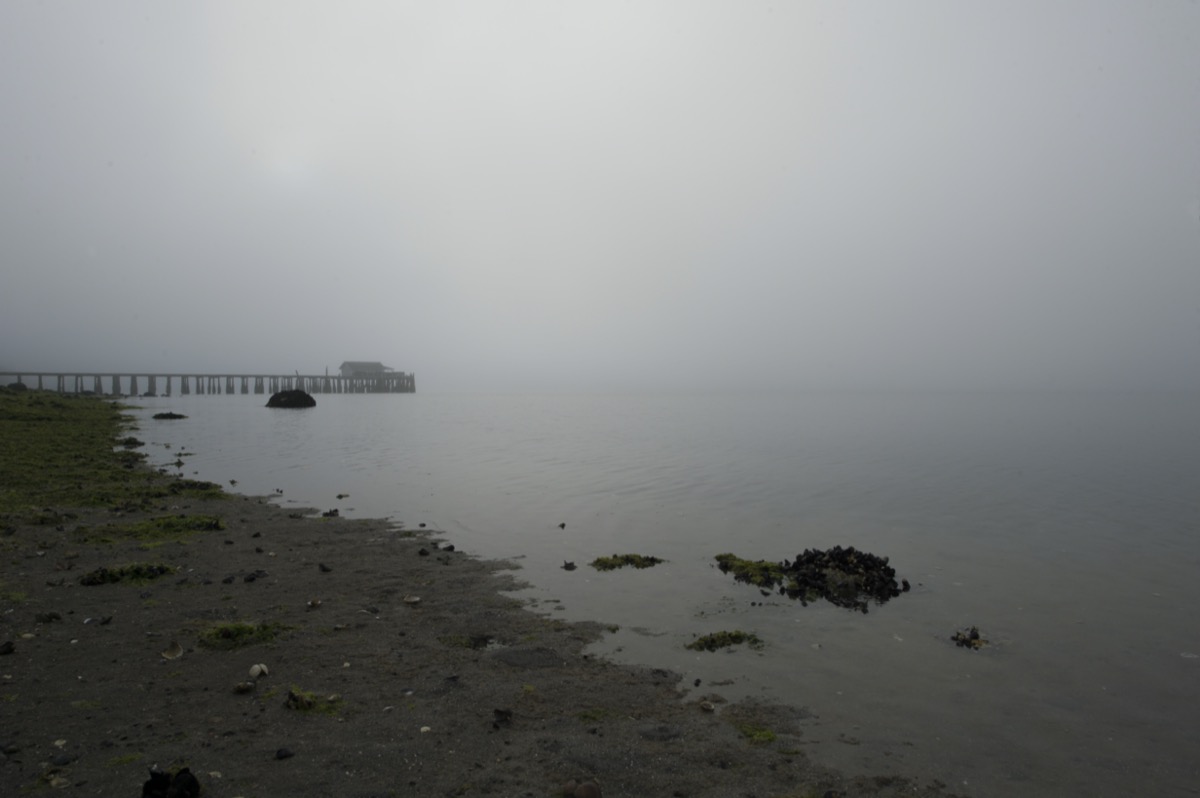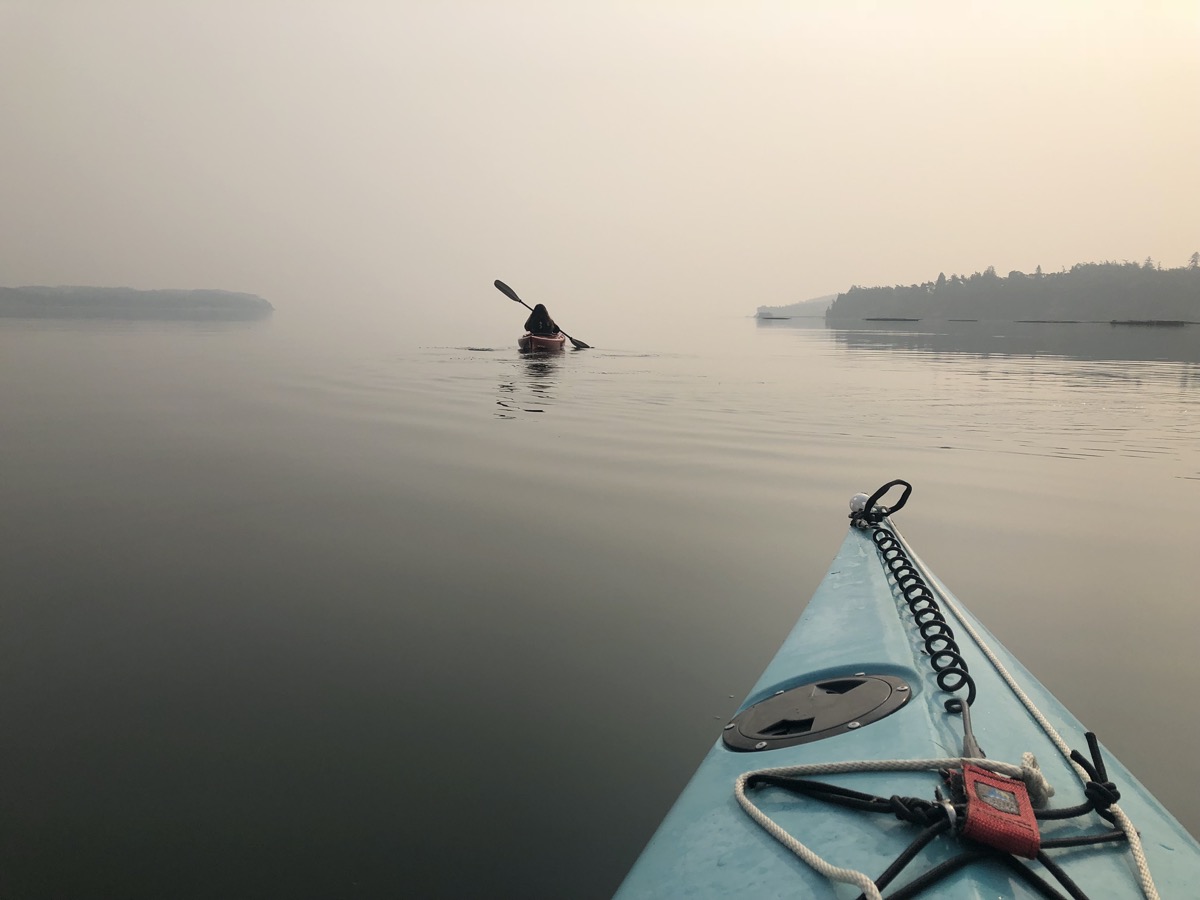
Terminal Dock, San de Fuca, Washington.
We spent much of August at Penn Cove, on Whidbey Island, Washington. This will be remembered as the year a blanket of smoke moved in on August 14 and did not leave. The sun turned into an orange moonish ball, the horizons disappeared.
On August 24, as fires still burned in California, Oregon, Idaho, Washington, and British Columbia, Gavin Schmidt, the director of the NASA Goddard Institute for Space Studies, wrote an opinion article in the New York Times: “How Scientists Cracked the Climate Change Case.” By all accounts such an article is not something that should have been necessary at this point to write. And, if it were necessary, such an article should have been the period on the sentence on the who and the what, vis-à-vis blame for climate change.

Kayaking on Penn Cove, with destination mussel rafts visible but no horizon.
Setting the scene:
“For the past 100 years we have documented good, independently confirmed observations of change at the surface of the planet, and for the past 40 years satellites and comprehensive measuring efforts have provided a much fuller view of changes throughout the earth system. These observations show clearly that among other things, the surface of the planet has warmed, the upper atmosphere has cooled, the oceans are gaining an enormous amount of heat, sea level is rising, Arctic ice has greatly receded and glaciers around the world are in retreat.”
These are observable, demonstrable facts, facts about data, facts seemingly immune to the powerful psychological embrace of denial, facts uncontroversial by now even among some tea-party Americans and others among the world’s conspiracists who long believed that mainstream science was hiding something behind its climate assertions, and yes also that Elvis is still alive, that men never landed on the moon, and that contrails contain chemicals to control our thinking about all these subjects and many more.
While some of those people may have begun to admit the existence of climate change, the question of who or what deserves the blame for it remains to them up in the air. This question is just as important to them — because after all, if humans are not responsible, then there is no reason to change our behavior or adapt our lives to face the consequences of not doing so.
Schmidt continues straightaway: “Scientists have no shortage of suspects for the causes of climate change,” and pays respect to volcanoes, asteroids, and the flutterings of the sun — bugaboos that conspiracists point to in their desperation to continue blamelessly driving cars with deplorable gas mileage, air-conditioning all the empty rooms in their houses, and converting raw materials into landfill with wild abandon.
Then three tight paragraphs explain away any cause that isn’t humanity’s misbehavior, and Schmidt concludes that:
“Even more convincingly, these trends aren’t just being attributed in hindsight. The rate of surface warming was predicted in the 1980s, the cooling in the upper atmosphere was forecast in a 1967 scientific paper, and specific measurements from space indicate that the total greenhouse effect has been enhanced exactly as theory would predict.”
We all know, or else we try not to know, that “Our best assessment is therefore that humans, at least the ones responsible for the bulk of carbon dioxide emissions, have been responsible for all of the recent trends in global temperatures. The forensics have spoken, and we are to blame.”
In this context, we floated on the waters of Penn Cove — themselves warming like the air, and rising due to glacial melt, and acidifying — and wondered how much of what we think is essential is actually behavior that we need. How much of adapting to climate change will be simply doing less of what we don’t need to do or care about doing?

Early sunrise, reduced to its most basic elements by airborne particulate matter.

0 Comments